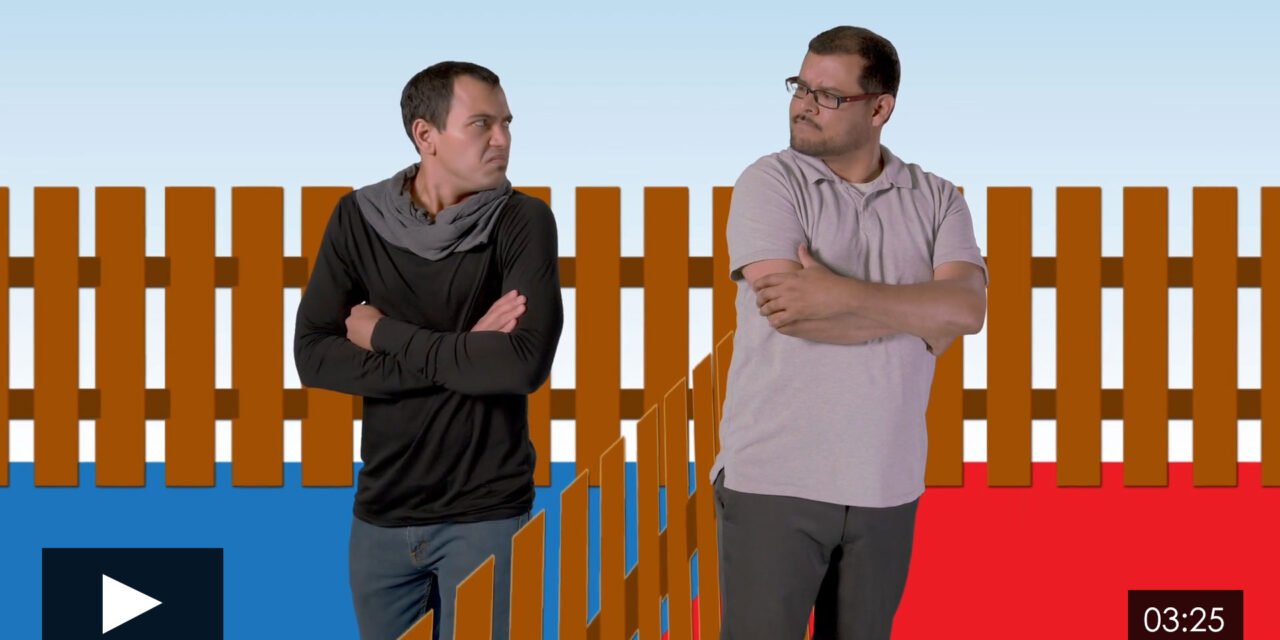This is the final episode in our new video series dramatizing encroachments and boundary disputes.
The prior video introduced the doctrine of agreed-to boundaries.
The element of duration
An agreement to mark a boundary line may be oral, written or result from the conduct of neighboring property owners.
Oral or written agreements on the boundary’s location are called express agreements since they are not implied.
Written agreements are the most effective type of express agreement since they formally document the mutual intentions of both owners. However, they usually exist only in the case of a lot line adjustment map. Unlike the conveyance of real estate, owners do not have to put their boundary agreement in writing for it to be enforceable.
With the setting of an agreed boundary, neither owner is conveying real estate to the other. Instead, the owners are agreeing to what land constitutes their own property. [Young v. Blakeman (1908) 153 C 477]
Owners need to acquiesce to the agreed boundary for a period of at least five years. This five-year period is the statute of limitations for the recovery of real estate. [Calif. Code of Civil Procedure §318]
The statute of limitations requires the adjacent owners to resolve a dispute within the five-year period. When disputes are not settled within this period, the claims are put to rest. Thus, an owner who fails to object to a boundary dispute during the statute of limitations period is presumed to have agreed to the boundary set by the adjacent property owner.
However, an exception to the five-year rule arises when substantial loss will be caused by the movement of the agreed boundary to the true lot line.
For example, when an adjacent owner builds improvements near the line established in reliance on an agreement that it is the boundary, the new boundary is allowed without the enforcement of the five-year period. However, the new boundary is only allowed when the adjacent owner can show that moving the boundary will result in substantial loss due to the existence of improvements. [Roman v. Ries (1968) 259 CA2d 65]
Marking the line
When a writing setting the boundary is not available, subsequent owners need to look to the prior owner’s activities for an implication that an agreement existed as to the location of the boundary line.
For example, the construction of a fence may imply an agreement to set a boundary. However, in order for the fence to control in an agreed-boundary dispute, the owner relying on the fence as a boundary needs to present evidence to show the fence was erected to resolve a boundary uncertainty known to previous owners.
For example, a fence is erected between two parcels of real estate by the owners of the parcels. Both parcels are sold 20 years later.
The new owner of one of the parcels commissions a survey. The survey reveals the 20-year old fence dividing the owner’s property and the neighboring property is not in the correct location.
The owner builds a new fence on the actual boundary line located by the survey.
The neighbor then seeks to remove the new fence and obtain possession to the real estate up to the old fence line. The neighbor claims the agreed-boundary doctrine sets the boundary at the original fence line since the fence existed for 20 years without dispute.
The owner claims the agreed-boundary doctrine does not apply since the previous landowners did not agree to erect the fence based on any uncertainty as to the location of the true boundary.
Can an agreement be implied to set the boundary line at the old fence?
No! The mere acquiescence to the placement of a fence, absent evidence of uncertainty and an agreement to resolve the uncertainty, is not enough to establish a boundary under the agreed-boundary doctrine. [Mehdizadeh v. Mincer (1996) 46 CA4th 1296]
Fences are built for a variety of reasons, one of which is to establish a boundary. Other reasons for erecting fences include controlling animals, aesthetics or to prevent children from wandering off a property.
Further, the location and condition of a fence may be influenced by the topography of the property, the terrain on which it is placed, requirements of an animal enclosure or the loss of lateral and subjacent support. [Bryant v. Blevins (1994) 9 C4th 47]
While a fence or wall is evidence of a line for something, a fence does not necessarily set the property boundary.
Limitations of the doctrine
The agreed-boundary doctrine has limitations. The doctrine cannot be used to convey property. Further, the agreed-boundary doctrine can only set a boundary, the exact location of which is unknown to the adjacent owners without a survey or litigation.
Any attempt to convey a portion of a lot to the owner of an adjacent property by use of the agreed-boundary doctrine violates the statute of frauds which requires a writing documenting the intent to convey land. Thus, the agreed-boundary doctrine may not be used to make lot line adjustments in which adjacent owners move an existing line, the location of which is known to them.














